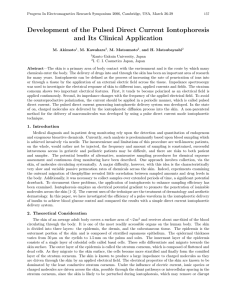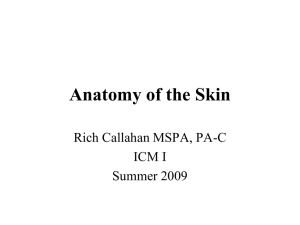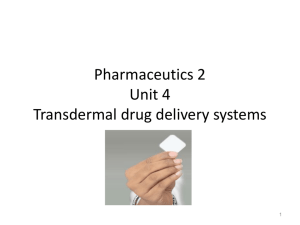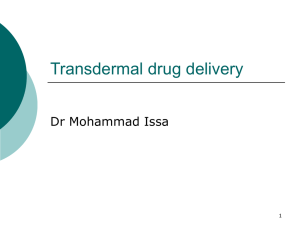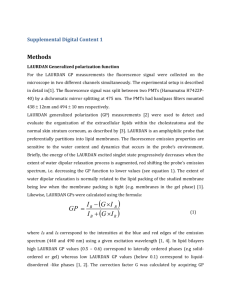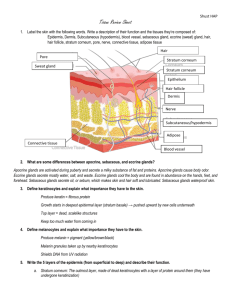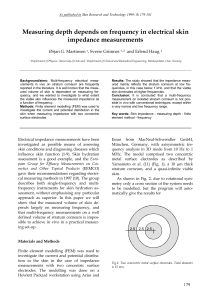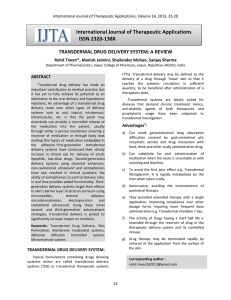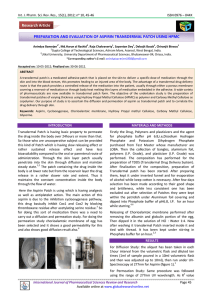Transdermal Ppt
advertisement
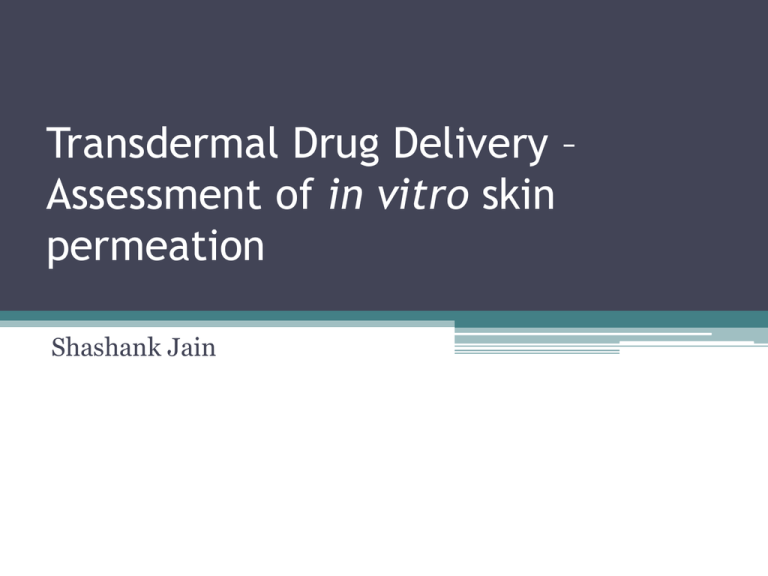
Transdermal Drug Delivery – Assessment of in vitro skin permeation Shashank Jain 2 Introduction • Transdermal and topical drug delivery • Advantage Site specific application First pass metabolism Avoid GI side-effects Controlled drug delivery Non-invasive • Limitation Dose Large molecules Skin irritation and metabolism Rate limiting stratum corneum 3 Skin structure 4 Pathways for drug permeation Stratum corneum Epidermis Dermis Blood supply 5 Approaches • Physical: Microneedle Iontophoresis Electrophoresis • Chemical: Ethanol PEG • Colloidal: Liposome Ethosomes Microemulsion 6 Iontophoresis 7 Ethosome Mechanism of skin delivery via ethosome vesicles* 8 Assessment of in-vitro permeation • Fick’s law of diffusion 9 In-vitro experiment setup A] Side-Bi-Side 10 In-vitro experiment setup (contd.) B] Vertical Franz 11 In-vitro experiment setup (contd.) C] Flow Through Cells: 12 In-vitro permeation study procedure • Step 1. Skin selection Human skin Animal skin Human skin equivalent • Step 2. Isolating skin section • Step 3. Experimental setup Mounting skin section Temperature Air bubble • Step 4. Sampling • Step 5. Drug deposition study • Step 6. Data analysis Permeation flux Cumulative drug permeation Drug deposition 13 Cumulative drug permeated/area A typical permeation profile Time 14 References: • Naik, A., Kalia, Y.N., Guy, R.H., 2000. Transdermal drug delivery: overcoming the skin’s barrier function. Pharmaceutical Science & Technology Today 3, 318-326 • Verma, P., Pathak, K., 2010. Therapeutic and cosmeceutical potential of ethosomes: An overview. J Adv Pharm Technol Res 1, 274-282 • http://www.permegear.com/primer.pdf • Bolzinger, M.-A., Briancon, S.p., Pelletier, J., Chevalier, Y., 2012. Penetration of drugs through skin, a complex rate-controlling membrane. Current Opinion in Colloid & Interface Science 17, 156-165. 15 Thank You 16 17 • Document BA/BE in order of preference are (1) pharmacokinetic (PK) measurements based on measurement of an active drug and/or metabolite in blood, plasma, and/or urine; (2) pharmacodynamic (PD); (3) clinical trials; and (4) in vitro studies. • The BA/BE determination based on PD (or clinical) and dermatokinetics. • DPK encompasses drug concentration measurements with respect to time, based on a stratum corneum concentration-time curve • Topical: If two formulation produce comparable stratum corneum concentration-time curves may be BE • A plot of stratum corneum drug concentration versus a time profile should be constructed to yield stratum corneum metrics of Cmax, Tmax and AUC. • Transdermal delivery systems, are considered to be bioequivalent if they yield comparable bioavailability-based plasma concentration–time profiles when administered to the same individuals under similar dosage conditions. • Two oral or transdermal formulations are judged BE if they produce comparable plasma concentration-time curves.


